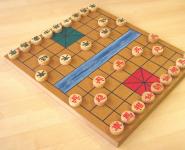How to teach a child to play checkers from scratch in a playful way
Checkers is a game that trains attentiveness, instills perseverance and focus on winning. The older group of kindergarten is considered a good age for learning. Exactly at the age of 4 - 5 years it is worth training children, developing in them a visually imaginative and predictive function of the mind, accustoming them to logical thinking. Let's talk in this article about how to teach a child to play checkers from scratch.
From this article you will learn
Benefits of the game
Psychologists have established the fact that children, starting from the age of 5, master and actively use the associative sequence "thought - word" or "thought - action". It is the kindergarten age that is considered the most suitable in order to begin a phased study of the rules of the game of checkers.
This intellectual game stimulates mental development, attentiveness, purposefulness. After a year of training, the resulting concentration and perseverance will help to achieve great success in school. And the ability to calculate the situation several moves ahead, make important decisions and take responsibility for them are qualities that will be very useful in adulthood.
If your child is still a preschooler, then you can teach him to play on your own, for this you need to have initial skills or watch educational video tutorials on the Internet. If a child of primary school age, and you yourself are new to this business, then you can send him to a school circle, where teaching follows different methods, depending on the level of training of the young checkers player.
Advice to parents: change family evening gatherings in front of the TV for a game of checkers, this will have a good effect on family cohesion, trust in each other. Perhaps this will become a good home tradition.
Rules of the game
There are several variations of the game in the world - Turkish, English, Italian checkers. They differ in color palette, options for moves, the number of fields and, accordingly, the number of figures. We will analyze the classic Russian checkers. In order to make it easier for the child to remember the rules, you can learn short funny rhymes with him.
Checkerboard for the Russian version of the game consists of 64 cells, painted in black and white, checkers also have black and white colors. Before the start of the duel, all the figures are placed in the three lower rows against a dark background. 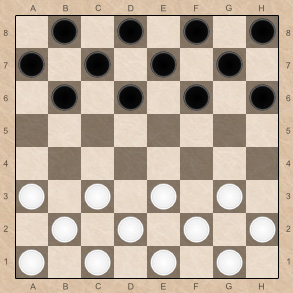
All moves in the game are carried out only on a dark background:
Checkers slowly but accurately
They walk only on black cells!”
- The advantage of the first move always belongs to white pieces:
“You can start the fight boldly -
The first move is always for white!”

“Everyone knows: both old and young,
With a saber we beat forward - back!
- Walk in the other direction with this position of the figures prohibited, even if you substitute yourself for a hit:
“Probably the checkers are unlucky,
Checkers move only FORWARD!
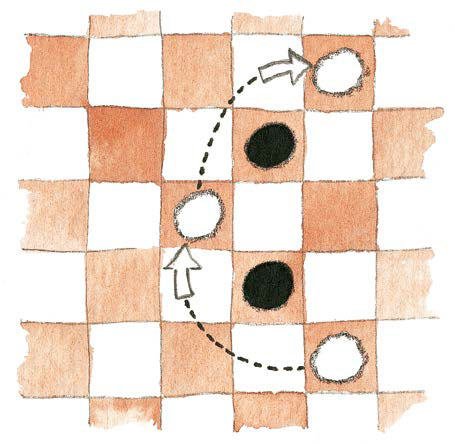
“The opponent’s checker will immediately die,
If yours jumps over it!
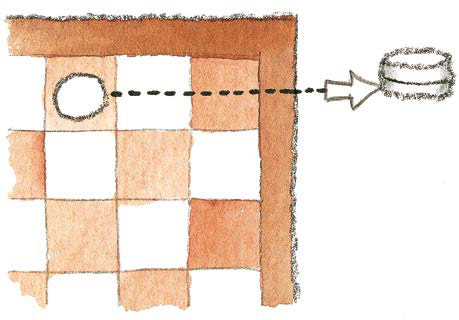
"The fields will suddenly come to an end,
Immediately the checker will become a queen!
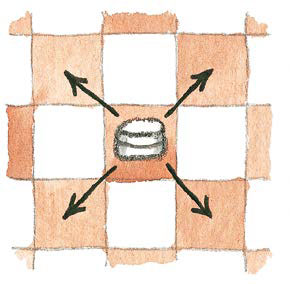
"So that your lady is not caught,
Move it along the entire diagonal!”
- Kill the lady, in the appropriate position, any shape can.
- The player who wins the first one to kill all the opponent's checkers:
"The goal of the game is to beat the "enemies"
And so that they had no moves!
Advice to parents: if you are having difficulty explaining the rules to your child, then use online training courses, where experts give not only instructions for the game, but also conduct online consultations for parents.
How to teach
The first lesson should begin with an introduction to the playing field. Let the child first independently try to arrange the figures correctly, if it doesn’t work out, come to the rescue. Explain that the middle must remain free for combat, then go directly to the game.
On a note! Try to play with fewer checkers. In the first training game, their number can be reduced to 8. This will allow you to better familiarize yourself with the rules and use more exercises.
When you get to the point where the opponent's pieces are next to each other and the cells behind are empty, explain that, as in any battle, it's time to kill the opponent. The first person to do so is the one whose turn it is to go.
You can make a move back in the case when you can eat someone else's checker. When one of you gets to the opposite side of the board, turn over the piece - now it's a king. For greater clarity, you can stick a colored circle or picture on the lady, showing her significance and the ability to walk as she pleases: on any number of cells both forward and backward.
Usually the child is so carried away and concentrated that he does not see the whole situation, does not notice the dangers that the enemy is preparing for him, does not realize the dynamics of the whole game. An important skill that you must teach a young player is to calculate your own and other people's moves, to predict possible situations.
Check out helpful tips from additional education teacher Matveeva Irina Vladimirovna.
- As paradoxical as it may sound, but learning should take place in the form of a game. The usual reading of the rules will not lead to any result. Transform all figures into warriors and practice your strategy of capturing aliens or crown the most worthy knights to reign. Come up with new stories every day, the participants of which will be your acquaintances, friends, favorite characters of cartoons or fairy tales.
- Don't let your baby get overtired. No matter how interesting your party is, it is necessary to take breaks for a physical education minute, a snack or a short walk. This will not only save your health, but also prevent the game from becoming boring and uninteresting.
- Praise, encourage your child, point out the most successful combinations, inspire victories and new achievements. Do not scold if the child did not understand something or made the wrong move, be more patient. Show your child an interesting and understandable video with great grandmasters.
- Don't give in! If the child wins all the time due to the fact that you successfully “rigged” everything, then there will be no sense in such a game. It is enough only occasionally to give him a head start to add confidence in his abilities. Of course, the loss will upset the baby, tears may even appear, but this will serve as an incentive for the next victories. Just explain that it’s not shameful and not scary to lose, it’s shameful not to try anything, but it’s scary not to try to do better next time.
- When the game of Russian checkers is understandable and accessible, you can play " Giveaway», « Chapaeva», « corners". These types of checkers are no less interesting and exciting. When you master these funs, then the time has come.
Gentlemen's Rules
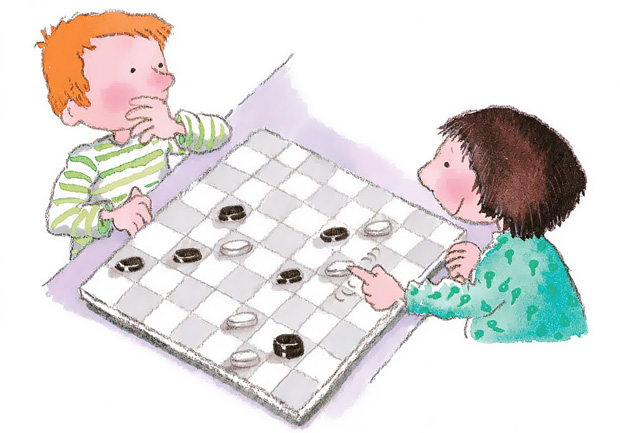
The presence of gentlemen's rules is a feature of Turkish drafts. However, their use in the Russian version of the game is not only appropriate, but also quite justified.
- As a sign of respect for each other, at the beginning and at the end of the game, the opponents shake hands. Thus, at the beginning of the game, it contributes to a friendly mood, and at the end, despite the fact that there is a winner and a loser, the tension is relieved.
- Distracting the attention of a partner in the game, prompting is strictly prohibited. Cheating, like any kind of fraud, is not held in high esteem in a decent society.
- Playing quietly, measuredly, without throwing the figures, rearranging them without too much noise - signs of a well-mannered person.
- Laughing at the loss of an opponent is unacceptable. Respect for a person in any situation is a sign of nobility.
Important Terms
- Simple- a regular checker that is not a queen.
- side checker- a figure located on the edge of the playing field.
- lady field- the last, 8th row of the playing field.
- King- a figure that has reached the ladies' field.
- Move, or quiet move- movement of a checker piece from one cell to another.
- shock stroke- a move in which the opponent's checker is captured.
- sacrifice- placing an ordinary checker in such a way that the opponent can kill it.
- Exchange A move in which both players lose the same number of pieces.
- passing checker- a checker, which on the next move will take the place of the queen.
- Breakthrough- a combination of techniques that provides passage to the kings.
- Tetanus- the defeat of the queen determines the order of the move.
- Sieve- such an arrangement of figures in which free fields alternate with occupied ones through one.
- Locking- the checker is in such a position that it is covered by the opponent's pieces and has no move.
IMPORTANT! *when copying article materials, be sure to indicate an active link to the first
